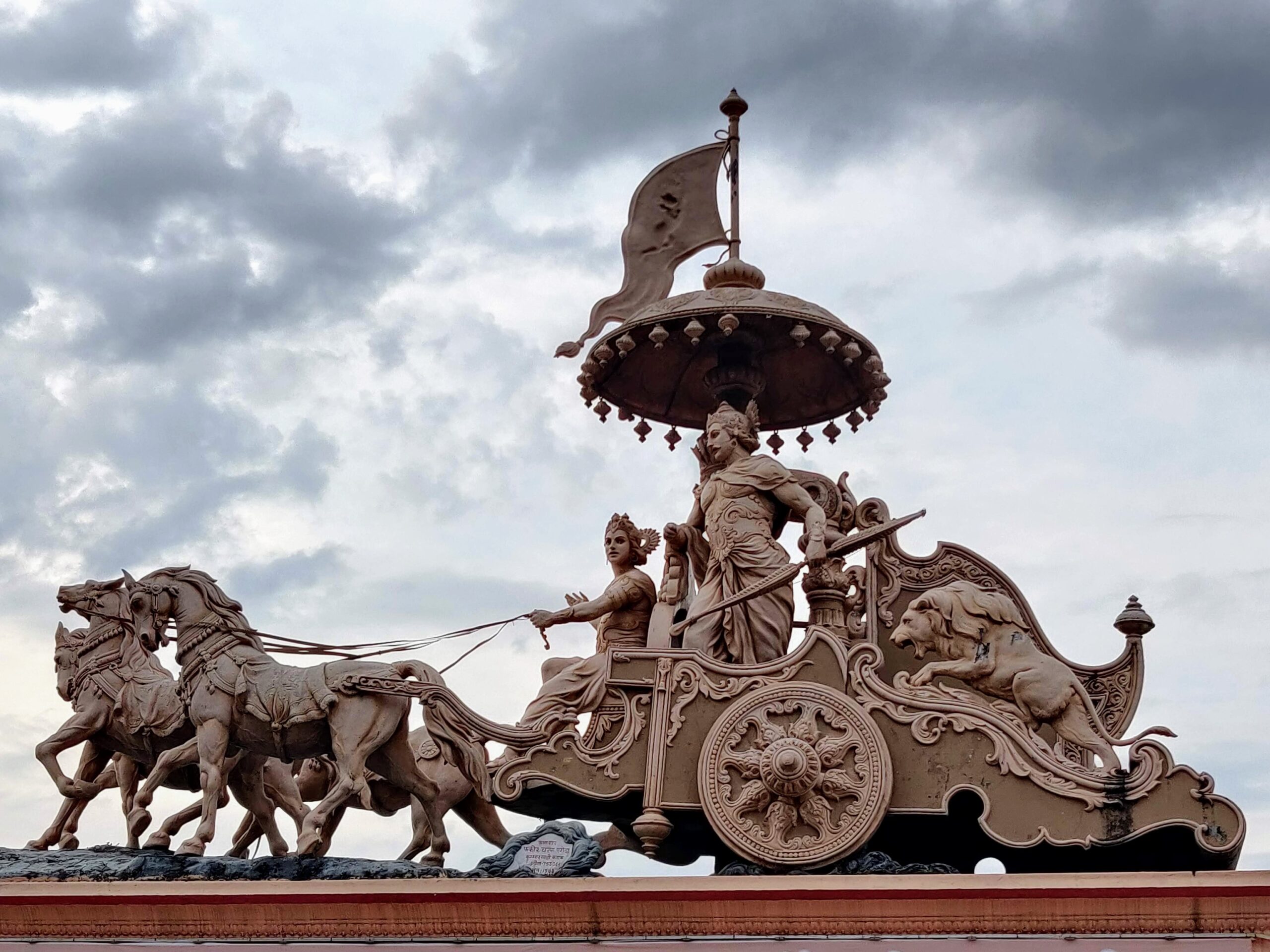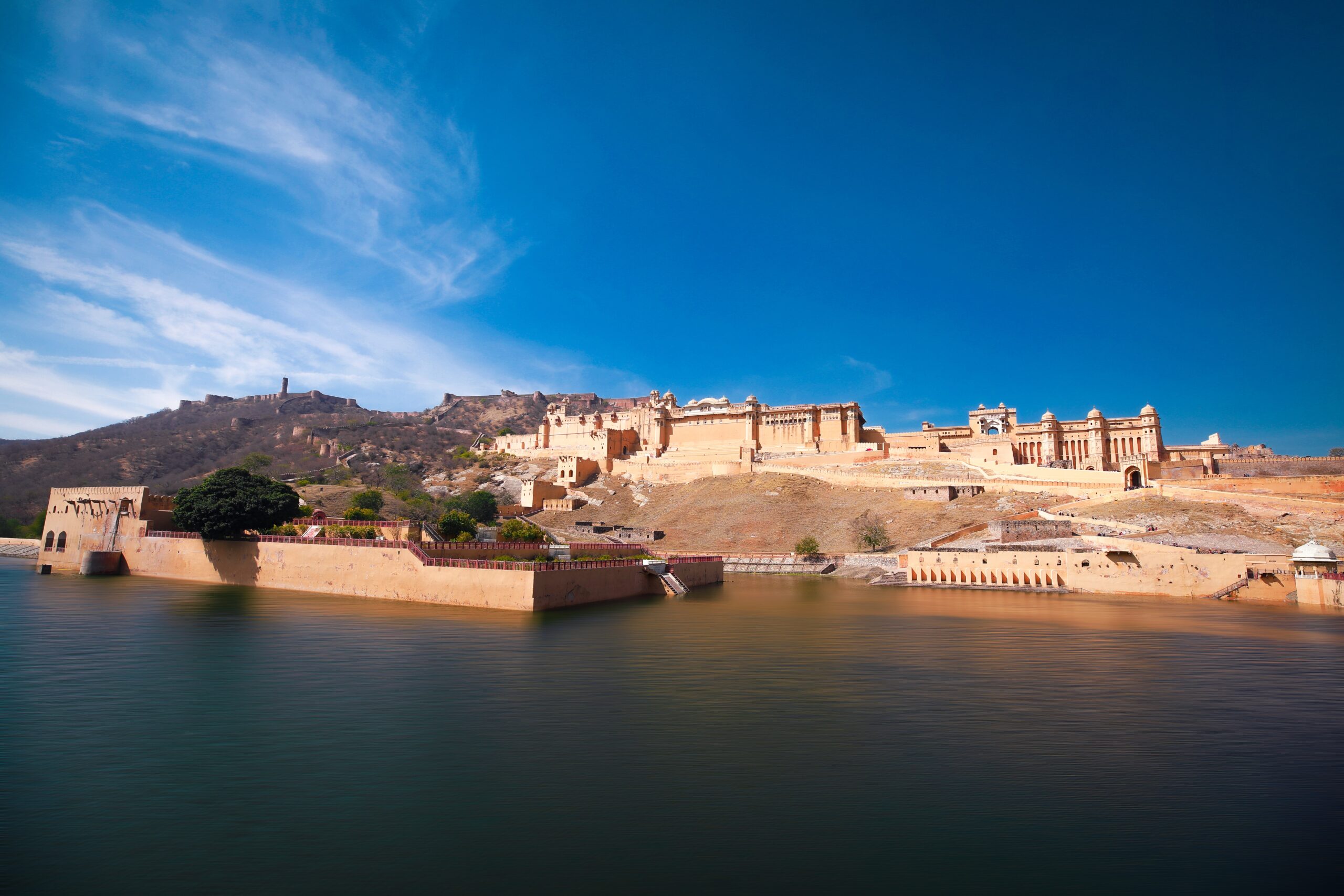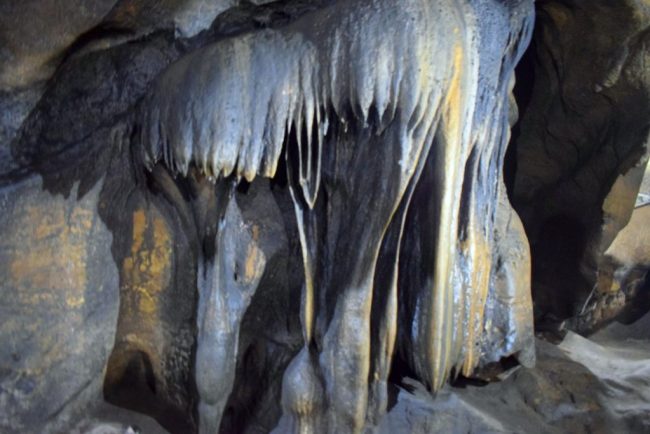Table of Contents
Overview of Ranthambore Fort
The Ranthambore National Park Area, which includes Ranthambore Fort, is located close to Sawai Madhopur. Up to India’s independence, the Maharajahs of Jaipur used the park as their hunting grounds. It is a strong fort that has played a significant role in Rajasthan’s historical growth. The Nagil Jats are said to have built the fort. Devotees are also very drawn to the fort because of its religious importance. Many worshippers are drawn to the Ranthambore Fort in Sawai Madhopur, India, which houses a variety of mosques and temples. Ranthambore fort is among the major attractions for tourists and visitors that come to Ranthambore National Park to take in the wildlife, along with a number of temples and lakes. The fort offers a panoramic view of the adjacent Ranthambore National Park. Due to its history of protecting the Rajput Empire from invasions by foreign invaders, the fort is regarded as the height of strength. Ranthambore Fort and five other Rajasthani forts were included in the list of Rajasthan Hill Forts that were designated as UNESCO World Heritage Sites in 2013 at the 37th session of the World Heritage Committee.
Culture of Ranthambore
The residents of Ranthambore are hospitable and fervently religious. They are primarily craftsmen and come from many castes and tribes. The region is inhabited mostly by Rajputs, who are renowned for their gallantry and bravery. Numerous local inhabitants engage in a range of artisan activities that reflect Ranthambore’s rich history and tradition. Many lovely Rajasthani products, including bandhani and batik textiles, silver jewellery, traditional paintings, puppets, and keepsakes, are sold at the town’s local markets. Ganesh Chaturthi, which commemorates Lord Ganesha’s birth and occurs in August or September, is the most well-known celebration in Ranthambore. Ranthambore’s cuisine is a wonderful fusion of traditional Rajasthani food and Mughlai cuisine.
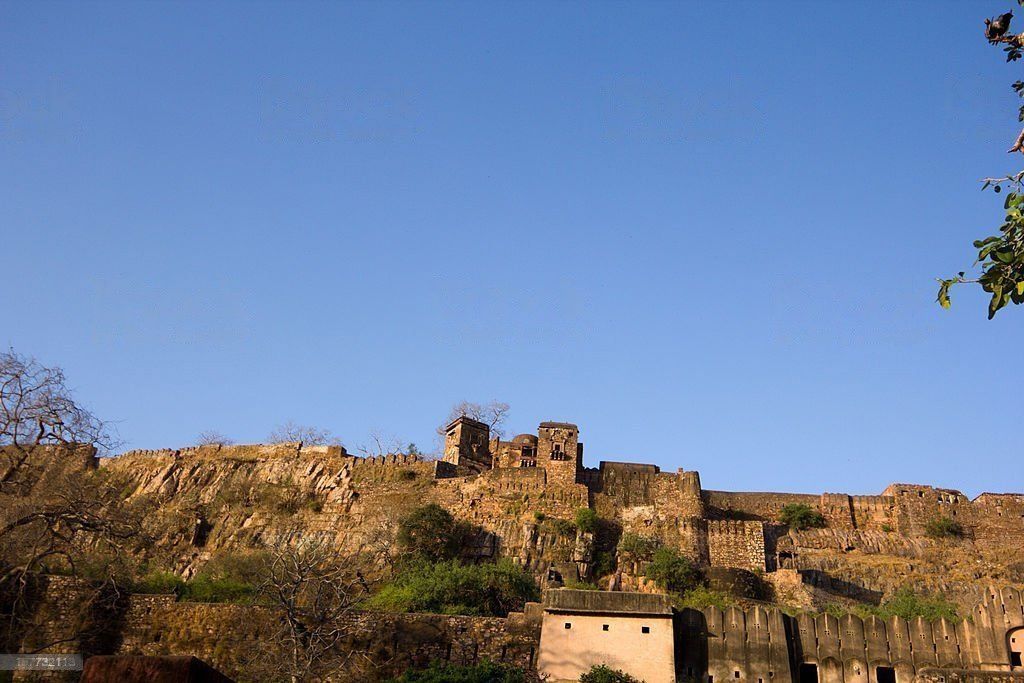
History of Fort
The Chauhan kings constructed the famous Ranthambore Fort in the tenth century. It was the best place to hold the enemy at bay because of its advantageous location. When the Muslim conqueror Alauddin Khilji besieged this fort in 1303 AD, the royal women allegedly committed “jauhar” (self-immolation), according to a historical tradition. Temples, tanks, large gates, and tall walls define the fort. The Ranthambore Fort, built in 944 AD, has been the scene of several sieges and wars. The conflict between Rao Hamir and Alauddin Khilji, the Sultan of Delhi, in 1301 AD, is arguably the most well-known of them.
The ownership of the Ranthambore Fort changed several times during the following three centuries until Akbar, the great Mughal emperor, eventually acquired control of the Fort and disbanded the State of Ranthambore in 1558 AD. Up to the middle of the 18th century, the fort was under the control of the Mughal emperors.
Geography of Fort
The Banas River and the Chambal River form the northern and southern boundaries of Ranthambore National Park, which is located on the edge of a plateau. The Ranthambore forest’s terrain is primarily rugged and jagged, with small hills and sharp rocks. The Aravali range’s mountainous region often comprises hills on one side and a gentle slope on the other. With the exception of a few tiny patches of flat ground and a few minor valleys, this Aravali expanse is largely an undulating landscape. These valleys are extremely beautiful and home to a broad variety of animal species. The forest’s tigers love to hang around in these valleys.
Location- Sawai Madhopur, Rajasthan
Coordinates- 26°1′13″N 76°27′18″E
Area- 103 Hectare
Weather Condition
Summer (April to June)
The summer is generally quite hot. Summers can last until the end of June and start at the end of March. The lowest and maximum temperatures between April and June are around 30°C and 45°C, respectively.
Monsoon (July to September)
In Ranthambore, the monsoon season is particularly warm and humid. Rainfall often begins around the end of June and lasts through the middle of September.
Winter (November to February)
Ranthambore experiences a cool and pleasant winter. It spans the period from November to February. The highest temperature during the day is very mild, staying about 20°C, while the minimum temperature during the night might drop as low as 2°C.
Architecture of Ranthambore Fort
The merging point of the Vindhya and Aravali Mountain ranges is where Ranthambore Fort is situated. It is a typical fort constructed using the time-honoured Rajputana architectural style. The same region was mined for the materials needed to build the fort, and the pits were eventually turned into reservoirs to supply the fort with water. In the summer, it is easy to observe these mined regions. Along with lime stones, timber, and these mined rock stones, it was erected. On its well reinforced walls, this fort contains seven significant gateways. It had strong, carved-wood and metal arched doors. There are several carved constructions for court yards within.
Places to Visit
Gates or Pols: The Ranthambore Fort also features a number of pols, or gates, which are a prominent feature of Rajasthani architecture. Special mention should be made of the Hathi Pol (Elephant Gate), Bada Darwaza (Large Gate), Mor Dwara (Peacock Gate), Ganesh Pol (Elephant Deity Gate in Hinduism), Suraj Pol (Sun Gate), and Navlakha Pol (The Nine Lakh Gate).
Ganesh Temple: In the Hindu faith, “Pratham Ganesha” is thought to be the Trinetra Ganesha of Ranthambore. The Trinetra Ganesha Temple is the most well-known and historic temple of Lord Ganesha in Rajasthan, India, housing his entire family in one location. It is situated near the Ranthambore fort in the state of Rajasthan.
Hammir Court: The open court space known as the Hammir Court was created with particular acoustics in mind. Even now, the court is filled with a faint murmur that reverberates throughout the whole area.
Badal Mahal: It is a palace that like it was constructed in the clouds, and it is situated in the fort’s northern region. Hammir Singh is rumoured to have conducted his conferences and meetings in this enormous 84 column hall. The palace’s 61-meter-tall walls still stand tall despite being in ruins.
Gupt Ganga: In the heart of the dry desert, there is a water source called the Gupt Ganga, which is rather intriguing. This water body, one of the fort’s four water sources, remains functional even throughout the summer. Several animals can be spotted here and if you are lucky you may even get to see a leopard.
Kba Chattri: This dome, known as Bhamattis Kba Chattri, is supported by 32 pillars. Even though it is in disrepair now, the sculptures and paintings nevertheless provide hints of its regal history.
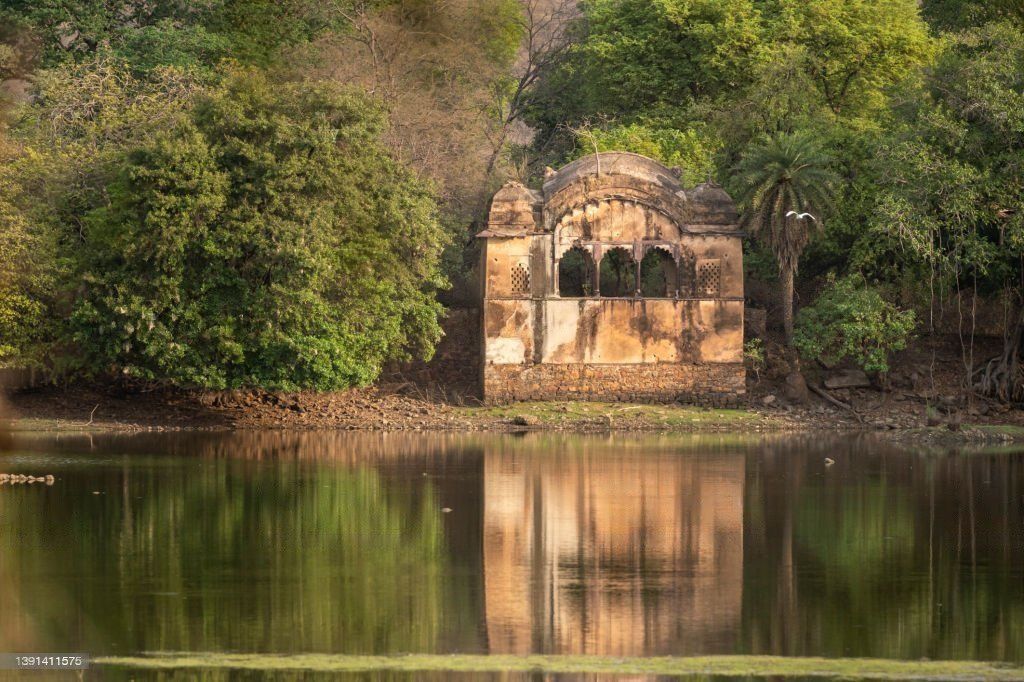
How To Reach
By Air: The closest airport to the Ranthambore fort is the Jaipur International Airport, which is situated 160 kilometre (km) in the Sanganer neighbourhood of Jaipur.
By Rail: Traveling by train is the quickest method to get to Ranthambore. The railway station in Sawai Madhopur is the one closest to Ranthambore Park. The station and the fort are separated by around 19 km.
By Road: All of India’s main cities and towns have direct access to the Ranthambore fort through the highway. From places like Jaipur, Jodhpur, Kota, and Delhi, travellers may get to Ranthambore Park quickly by using the state bus service, as well as private buses and taxis.
Low-Cost Accommodation
Saini Guest House, The Village Heart, Dream Holiday Guest House, Regenta Resort Vanya Maha
Ranthambore Fort Tour Cost
How much does Ranthambore Fort (Ranthambore National Park) tour cost?
Total Cost INR 9,100/–
Cost for 3 Nights Stay (per person)- Starting Point Delhi
Transport- INR 2,500/- including return
Hotel- INR 3,000/-
Food- INR 2,500/-
Other Things- INR 1,100/-
Thank You for Visiting Our Website “Fact Houses” (facthouses.com)

